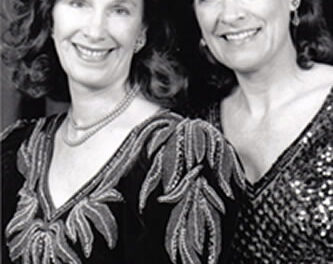Friday night’s concert by the Young Artists Orchestra of the Eastern Music Festival put the impressive playing of the students on display at Guilford College. Conductor José-Luis Novo led the large ensemble through two works, Anton Bruckner’s Fourth Symphony (“Romantic”) and a concerto for two violas, Two Paths (A Dedication to Mary and Martha) by Russian-born Sofia Gubaidulina (b. 1931). Kudos for programming such an unusual combination; a great way to provide both the student musicians and the audience a chance to explore works not often heard.
Gubaidulina is known for her non-compromising “modern” compositional style, and her Two Paths, written in 1999, is a hard listen as well as a hard play, even for a professional orchestra. But this group of dedicated young musicians amply brought the work to life, thanks in part to the urging of Novo and the fine playing of the two soloists, Daniel Reinker and Mara Gearman, both members of the faculty orchestra.
The composer describes her 30-minute work in some detail: the viola soloists represent two types of love, as exemplified by the Biblical Mary and Martha. She describes the orchestra as the “initiator” to which the two soloists respond, creating a theme with seven variations. The work was a fascinating excursion into differentiating musical material through different contours. The viola I part was assigned ascending lines, and viola II, the downward motion. These two characteristics are explored through the variations, but by the end each soloist is very firmly defined by the melodic direction.
The work begins with a unison melodic line in jagged rhythm, assertively played by the orchestra (although not entirely in synch). This rhythm becomes one of the binding features for the orchestra throughout the work. Gearman’s delicate upward viola lines were liquid, yet strongly shaped, and Reinker’s descending lines, just as gentle, featured frequent trills. Intonation from both was first-rate.
The fair-sized crowd was amazingly attentive to this philosophical musing that didn’t shy away from dissonance. Extreme ranges, from both the soloists and the orchestra, were frequently juxtaposed against each other. Yet the work also often had moments of extreme calm and coalescence.
It would seem that Bruckner’s symphony composed in 1874 (and revised several times over the next decade), would be stylistically miles apart from the Gubaidulina, but both are held together through a series of motives that provide unity throughout the entire work.
The Fourth Symphony is a sprawling work, cast in four movements and runs well over an hour. The huge orchestra offers plenty of color which the composer utilizes to good effect. The score provides many spotlights for soloists from all sections of the orchestra, beginning with a horn call at the outset (which, according to Bruckner, “proclaims the day from the town hall!”). This solo, like others throughout the work, was played quite strongly by the first chair player.
The first movement contains several themes, including ones that hearken from folk music, a character that infuses the entire work. Intonation among the string players was not always perfect, but the sound was rich and colorful. The Andante second movement begins with a solemn processional, which one could discern from Novo’s expressive gestures from the podium. The third movement Scherzo had to be the audience’s favorite, with its hunting horn theme strongly played. The Finale, which slowly builds to several gigantic climaxes, pulls out all the stops — the entire orchestra playing fortissimo with the strings sawing like crazy. The end result was exhilarating if exhausting.












